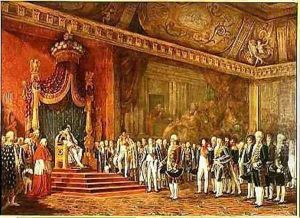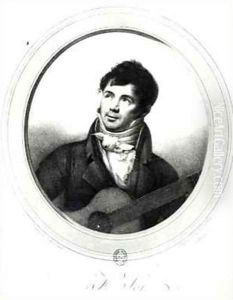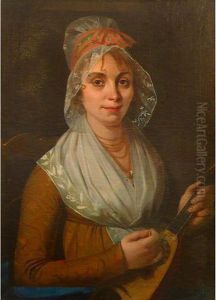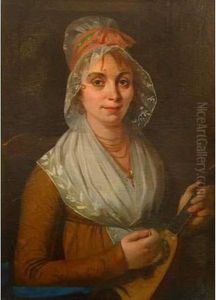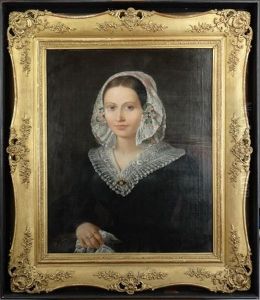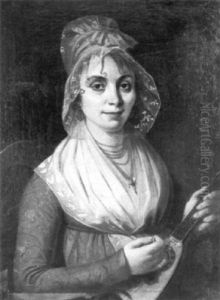Innocent Louis Goubaud Paintings
Innocent Louis Goubaud was a French painter born on February 15, 1832, in Marseille. He was known for his genre paintings, landscapes, and portraits, embodying the academic and realistic styles prevalent during the 19th century. Although not as widely recognized as some of his contemporaries, Goubaud's work provides a glimpse into the artistic trends and social mores of his time.
Goubaud's early life and training are not extensively documented, but it is known that he was active in the Parisian art scene from the mid-19th century. He likely received formal art education, as was common for artists of his era, which would have included studying the works of old masters and practicing life drawing. He may have been influenced by the dominant French art movements of his time, such as Romanticism, which focused on emotional expression, and Realism, which aimed to depict subjects truthfully without idealization.
Throughout his career, Goubaud exhibited his works at the Paris Salon, the official art exhibition of the Académie des Beaux-Arts in Paris. This was a prestigious venue where artists could gain recognition and sell their works to patrons. Goubaud's paintings often depicted scenes of everyday life, reflecting the Realist interest in representing the experience of the common people. He also painted portraits, which captured the character and status of his subjects through detailed and refined brushwork.
Despite his participation in the Salon and his contributions to French art, Innocent Louis Goubaud did not achieve the same level of fame as some of his peers. However, his works are still of interest to art historians and collectors who appreciate the nuances of 19th-century French art. Goubaud's paintings are part of several museum collections and continue to be studied for their aesthetic qualities and historical context.
Innocent Louis Goubaud passed away on August 28, 1904. His legacy is that of a skilled painter who captured the spirit of his time, contributing to the rich tapestry of French art history. As with many artists of the period, subsequent generations may rediscover and reevaluate his work, potentially leading to a greater appreciation of his artistic achievements.
